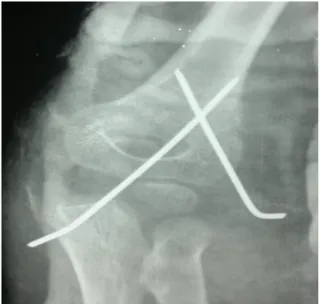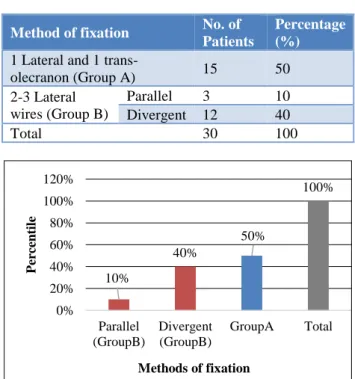Percutaneous transolecranon pinning and lateral pinning Vs lateral pinning in displaced supracondylar fractures of humerus in children: an observative study
Full text
Figure



Related documents
Comparative study of surgical treatment of supracondylar humerus fractures Gartland’s extension type III in children by closed reduction and pinning versus open reduction and
messages in the network. Routers that forward those messages will consume additional energy. If a large number of links in the network, break, then a lot of energy of various nodes
• In most states, this is a felony is the value is of the property received is more than $100 and a. misdemeanor if the value is $100
Clinical outcome data for computer navigated UKAs is limited, with one study [19] demonstrating no significant differ- ences between function parameters of navigated and
APAH: Associated pulmonary arterial hypertension; BAI: Beck Anxiety Index; BDI: Beck Depression Index; MBSR: Mindfulness-based stress reduction; NYHA: New York Heart Association;
In cases where ulnar nerve injury occurs when the medial K-wire is fixated by decreasing the elbow flexion after placing two lateral K-wires, removal of the medial
The purpose of this study is to determine the efficacy of management of displaced supracondylar fractures using closed reduction with percutaneous K-wire pinning and
After closed reduction and percutaneous pinning of a displaced, uncomplicated, supracondylar humerus fracture, 94% of the child’s normal elbow ROM should be expected by 6 months